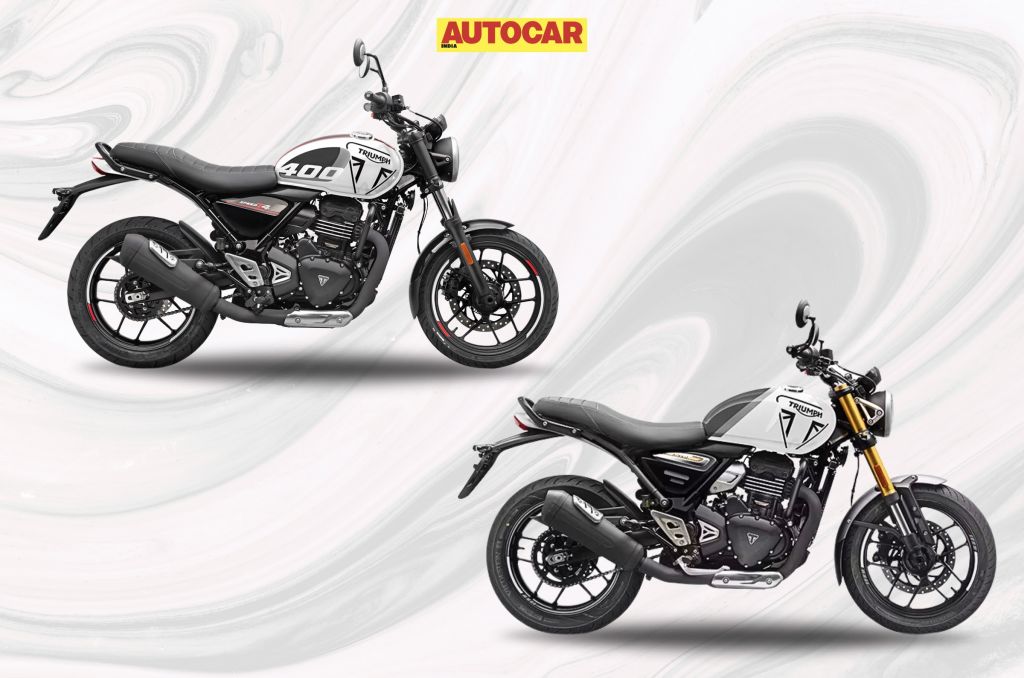
Triumph has launched an updated version of the Speed 400 and also added a new member to its 400 family: The Speed 4T. The latter is quite heavily based on the former, but also has some notable differences that allow Triumph to price it lower and make it the entry point to the British brand. Let's examine their similarities and differences.
Speed 400 vs Speed 4T: Similarities
Both bikes have the same tubular frame chassis and a bolted-on subframe. They also use the same liquid cooled 399cc TR-series engine, though there are some key differences as you’ll find out soon. Wheel sizes are the same with 17-inches at both ends, as are things like brake disc sizes (300mm/270mm) as well as the overall design language. Even areas like instrumentation and switchgear are shared between the two bikes.

Triumph Speed 400 Vs Triumph Speed 4T: Differences
Both bikes are built around the same frame, but several key differences set them apart, starting with the front suspension. The Speed 400 comes equipped with a golden upside-down fork, while the T4 uses a conventional telescopic setup. The Speed 400 also features adjustable levers and a radial front brake caliper as standard, whereas the T4 has non-adjustable levers and an axially mounted front caliper. In terms of mirrors, the T4 opts for conventional ones, while its sibling sports more stylish bar-end mirrors.
The most notable difference is in power and torque. While both bikes are powered by the same 399cc TR-series engine, they have drastically different states of tune. The Speed 400 delivers 40 hp and 37.5 Nm of torque, outperforming the T4's 31 hp and 36 Nm. However, that doesn’t quite tell the full story, since the T4 actually produces more torque than the Speed 400 from 3500rpm to 5500rpm, emphasising low-speed and low-RPM rideability.
To go with this more easygoing nature, the T4’s rear sprocket has been reduced in size, going from 43 teeth to 39 teeth, effectively giving it taller gearing. The drop in engine output has also prompted Bajaj to exclude traction control on the T4. As a result, it also uses a cheaper cable-operated throttle and not ride-by-wire like the Speed 400.

The 4T weighs slightly more, tipping the scales at 180 kg, just 1 kg heavier than the Speed 400, and the company says this is largely down to the different tyres between the two bikes.The T4 is fitted with MRF Zapper bias-ply tyres (110/70-R17 at the front, 140/70 R17 at the rear), while the Speed 400 comes with chunkier Vredestein radial tyres featuring larger sidewalls (110/80 R17 at the front, 150/70 R17 at the rear).
The final difference is the price, where as you’d expect, the more powerful and more feature-rich Speed 400 is pricier – starting at 2.40 lakh as opposed to the 4T’s price tag of Rs 2.17 lakh.
Also See: